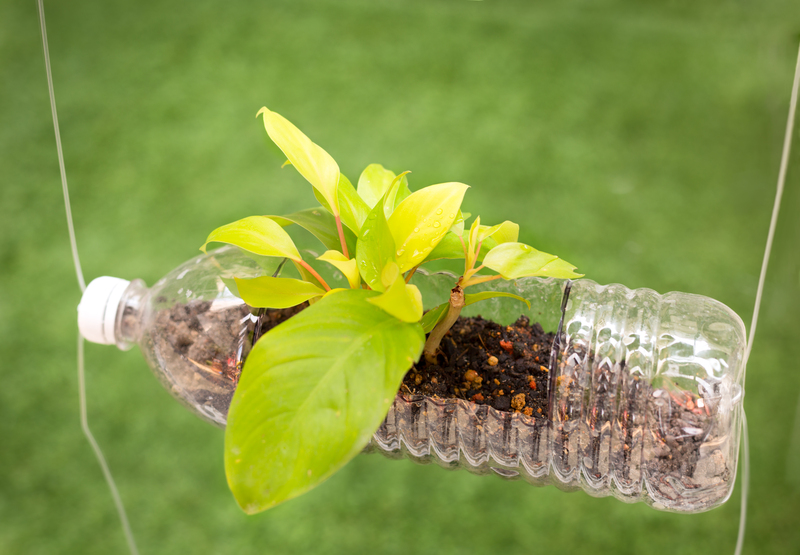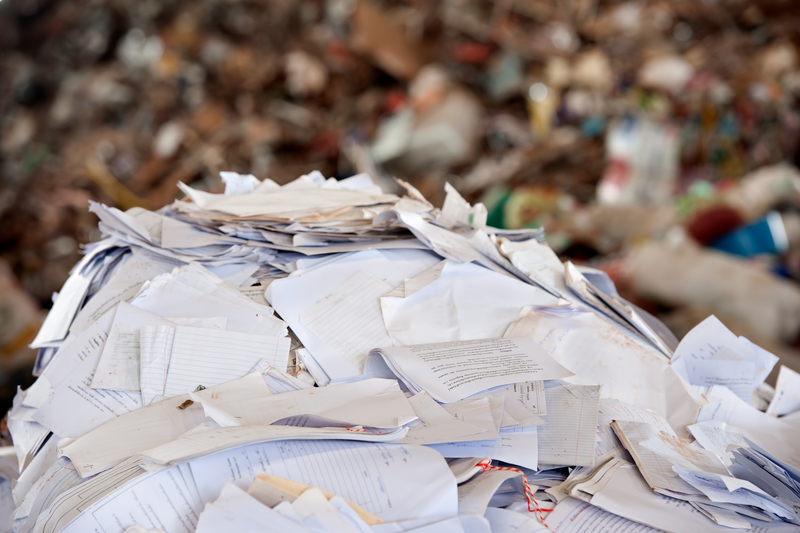Understanding the Risks of Improper PPE Waste Disposal
The spike in the use of Personal Protective Equipment (PPE) during health crises, particularly during the COVID-19 pandemic, has underscored the vital role of proper PPE waste management. PPE, which includes items such as masks, gloves, gowns, face shields, and respirators, safeguards users from hazardous substances and infections. However, improper PPE waste disposal creates significant environmental, health, and legal risks that often go unnoticed. In this article, we provide a comprehensive overview of why proper disposal of PPE waste matters, the dangers linked to mishandling PPE, and how individuals and organizations can responsibly manage PPE waste.

What is PPE Waste?
PPE waste refers to any discarded personal protective equipment--whether used or unused--generated by healthcare professionals, industry workers, or the general public. With billions of masks and gloves produced globally each month, the improper disposal of PPE waste is an emerging concern for communities, ecosystems, and governments alike.
Key Types of PPE Waste
- Medical masks (surgical and N95 masks)
- Disposable gloves (latex, nitrile, or vinyl)
- Face shields and goggles
- Protective gowns and aprons
- Shoe covers and hair nets
The Environmental Risks of Improper PPE Disposal
PPE waste disposal mistakes can trigger disastrous environmental consequences. Most PPE is composed of non-biodegradable or slow-to-degrade materials such as polypropylene, plastic, and synthetic fibers. When not properly collected, segregated, or treated, PPE waste can wreak havoc on the environment in the following ways:
1. Plastic Pollution in Landfills and Oceans
PPE items, especially disposable masks and gloves, often end up in garbage dumps or escape into natural environments. These materials can persist in landfills and marine ecosystems for decades, contributing to mounting plastic pollution. Microplastics, created when PPE degrades, enter food chains and endanger wildlife and human health.
2. Wildlife Endangerment
Improper PPE waste disposal can kill or maim animals. Birds, marine creatures, and land mammals may become entangled in elastic ear loops or ingest pieces of PPE. Tragically, this can lead to injury, choking, starvation, or even death.
3. Clogged Waterways and Drainage Systems
PPE litter--especially single-use masks and gloves--can clog storm drains, sewers, and waterways. This causes urban flooding and harms aquatic environments. Proper PPE waste management is crucial to prevent blockages and maintain effective water infrastructure.
Human Health Hazards Associated with Improper PPE Waste Disposal
Improper handling and disposal of PPE waste present substantial health risks. The main hazards include:
1. Increased Risk of Infections
PPE used in healthcare settings, quarantine zones, laboratories, and by infectious individuals may carry pathogens such as viruses and bacteria. When this waste is not securely contained and appropriately disposed of, it can expose sanitation workers, waste pickers, and the broader community to infectious diseases. The mishandling of infectious PPE waste has been linked to outbreaks of COVID-19 and other communicable diseases.
2. Toxins from Burning PPE Waste
In regions where waste management infrastructure is lacking, PPE waste is often burned in open areas. Burning plastics releases toxic fumes--including dioxins and furans--harmful to respiratory health. Prolonged exposure can cause chronic respiratory illnesses, cancers, and other serious conditions.
3. Accidental Contact and Injury
Discarded needles, sharp objects, and contaminated PPE pose injury risks to anyone coming into contact with them. These injuries not only cause physical trauma but also increase the risk of disease transmission.
Legal and Financial Risks of Poor PPE Waste Handling
Global Regulations for PPE Waste Disposal
Many countries categorize PPE waste as biomedical or hazardous waste. Regulations demand specific handling, storage, transportation, and disposal protocols. Failure to comply can result in:
- Legal penalties including fines and lawsuits
- Revocation of operating licenses for healthcare or manufacturing facilities
- Reputational damage and loss of community trust
- Increased financial liability for environmental remediation
Common Causes of Improper PPE Waste Disposal
Despite clear guidelines, improper PPE disposal persists due to various factors:
- Lack of Awareness: Many users, including the general public and small businesses, are unaware of the environmental and health risks associated with careless PPE disposal.
- Inadequate Waste Management Infrastructure: Some regions lack the segregated bins, treatment facilities, or protocols needed for efficient PPE waste handling.
- Poor Training: Staff and users may not receive sufficient training on proper PPE waste segregation, storage, and transportation.
- Cost-Cutting and Convenience: Improper shortcuts or cost-saving measures often bypass safe and legal disposal practices.
The Right Way to Dispose of PPE Waste
Step-by-Step Guide for Proper PPE Waste Management
- Segregation at Source: Always separate used PPE from general waste. Use designated bins with clear labels like "Infectious PPE Waste."
- Safe Containment: Store used PPE in leak-proof, puncture-resistant bags, ideally with color codes (such as yellow or red) specific to hazardous waste.
- Treatment Before Disposal: Where facilities are available, subject PPE waste to disinfection (autoclaving, chemical treatment) prior to final disposal.
- Final Disposal: Dispose of treated waste through approved incinerators or sanitized landfill sites, in line with local and national regulations.
- Staff Training: Ensure all staff handling PPE receive regular training in waste management protocols and emergency procedures.
PPE Waste Management in Different Sectors
Healthcare Facilities
Hospitals and clinics generate vast amounts of infectious PPE waste. Strict protocols and regular audits are critical. Most healthcare facilities use double-bagging, color-coded containers, and contractual services with specialized waste handlers.
Industrial and Laboratory Settings
Employees using PPE in chemical, pharmaceutical, and research labs often handle dangerous substances. Waste management strategies focus on hazardous chemical waste policies, separating contaminated PPE from general refuse, and ensuring compliance with legal mandates.
The General Public
Widespread mask and glove use among the general population, especially during pandemics, creates urban litter problems. Providing community guidance, accessible collection bins, and robust education campaigns are essential.
Innovative Solutions for PPE Waste Reduction
With the rising tide of PPE-related pollution, new strategies are emerging to minimize risks and environmental impact:
- Recyclable and Biodegradable PPE: New materials enable safer breakdown and recycling of used equipment.
- PPE Collection Drives: Community programs recue litter by collecting used PPE for proper processing.
- Energy Recovery from PPE Waste: Advanced incinerators convert hazardous PPE into energy while filtering harmful emissions.
- Awareness Campaigns: Governments and NGOs educate the public on correct PPE waste disposal through ads, flyers, and school programs.
- Reusable PPE: Where contamination risk is low, washable and reusable equipment lowers waste generation.
Challenges in Developing Regions
Developing countries face unique hurdles in PPE waste management. Limited infrastructure, low public awareness, and the prevalence of informal waste pickers heighten exposure to improper disposal's risks. International aid, capacity building, and technology transfer are needed to bridge this gap.
How to Protect Yourself and Your Community
Everyone can contribute to safer PPE waste disposal. Here are some simple actions:
- Never throw used masks or gloves in the street or public spaces.
- Use specially marked PPE waste bins wherever available.
- Bend the nose wire and snip the ear loops on masks to prevent animal entanglement before disposal.
- Follow local guidelines on PPE disposal -- especially after suspected infection or in quarantine settings.
- Report improper dumping of PPE waste to health authorities.
Conclusion: The Urgent Need for Responsible PPE Waste Disposal
Improper PPE waste disposal is not just an environmental issue; it's a public health emergency. From the risk of infectious disease transmission to devastating effects on wildlife and waterways, the consequences are far-reaching. Whether you're an individual, a business owner, or a healthcare professional, understanding the dangers and adhering to recommended procedures is crucial for safety, compliance, and the preservation of our planet.
By strengthening policies, spreading awareness, and embracing innovative solutions, we can all play a role in reducing the risks out of PPE waste mismanagement. Prioritize responsible disposal practices and encourage others to do the same--because a safer, cleaner world starts with each properly discarded mask and glove.

Frequently Asked Questions: PPE Waste Disposal
- What do I do with my used mask if no PPE bin is available? - Place it in a sealed plastic bag before disposing with household waste. Wash your hands immediately after handling.
- Can PPE be recycled? - Most current single-use PPE cannot be recycled with standard household plastics. Specialized recycling programs exist in some regions.
- What happens if PPE waste is thrown in the recycling bin? - Contaminated PPE can endanger recycling workers and contaminate recyclable materials, leading to the rejection of whole batches.
- Who is responsible for ensuring correct PPE disposal at workplaces? - Employers are legally obliged to provide disposal facilities and train all relevant staff in proper procedures.
References and Further Reading
- WHO Guidelines on Safe Management of Wastes from Healthcare Activities
- CDC: Medical Waste Background Information
- UNEP Report: Tackling Pandemic-Generated Disposable Plastic Waste
- EPA: Wastewater and COVID-19
By making PPE waste disposal a priority, we protect our health, our environment, and our future. Take action today!



